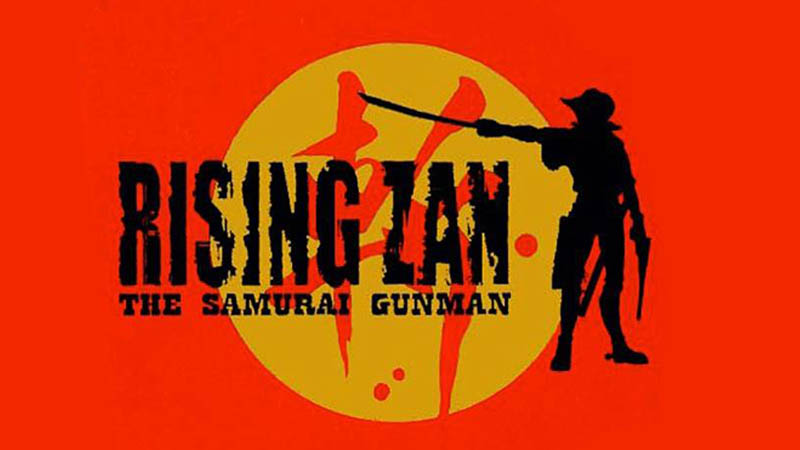
When most gamers think of stylish action games, Devil May Cry is usually the first title that comes to mind. When it came out in 2001 on the PlayStation 2, Devil May Cry was a huge hit, and ushered the beginning of the 3D stylish-action phenomena that still has a following to this day.
The technical aspects of stylish action is a big part of the appeal, often combing ranged and melee combat into a single cool yet red hot hero. Design aspects of this sub genre has made its way into RPGs like Final Fantasy VII Remake, and even first person action games like Doom: Eternal and the Shadow Warrior reboot. This was due to how much more complex and engaging the gameplay can become by adding a bit more nuance.
Little do most realize that efforts to create a 3D stylish action game date further back than the release of Devil May Cry. On the PlayStation, a humble Japanese developer who was known for making snowboarding games may have been the progenitors of the stylish action sub genre. Enter Rising Zan: The Samurai Gunman, the original sexy and stylish action hero.
Rising Zan: The Samurai Gunman
Developer: UEP Systems
Publisher: Agetec
Platforms: PlayStation, PlayStation 3 (via Japanese PSN)
Release Date: September 30, 1999
Players: 1
Price: ¥628 JPY (approx. $6.00 USD)
If you need help buying games from PSN Japan, you can find our guide here.
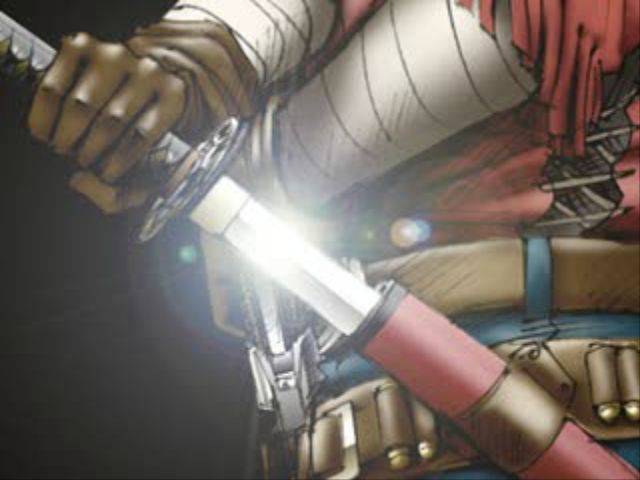
Just because Rising Zan was one of the first stylish-action games, that does not mean it has aged in the worst way imaginable. Sure, there are some things about it that will be a barrier to the average modern gamer. Things like the controls had not been defined for 3D games yet, because 3D action was still very novel at the time.
Things like dual analogue control was something only seen in very few games like Alien: Resurrection. It was very common for most 3D games to use the shoulder buttons to rotate the camera, and triggers would often have characters side-step or strafe.
Rising Zan happens to have some of these quirks, and understanding that this was an early 3D action game from 1999 does help understand the historical importance of it. Anyone who is willing to take the time to adapt will find that the Zan‘s gameplay still manages to be enjoyable and stimulating.
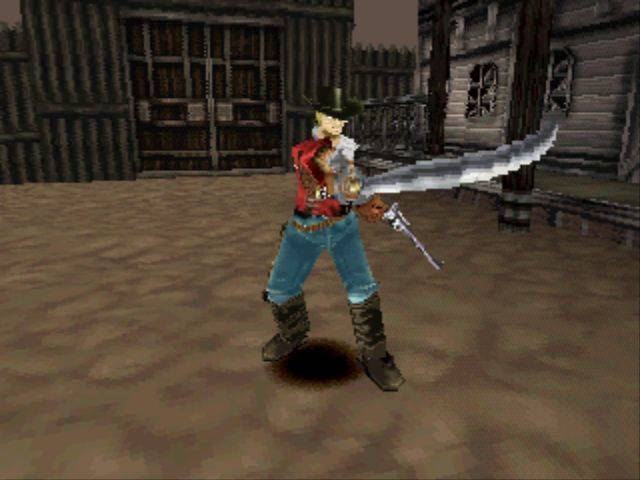
Zan is able to freely run around with the analogue stick, or can use eight-way directional running using the D-pad. He moves very fluidly and quickly for a boxy cowboy, and his swordplay has a bit of satisfying crunchiness to his strikes.
For such a haggard and rough looking early 3D action game, Zan is still very playable. The samurai gunman can target and circle strafe around targets like the hero of time, and is able to easily alternate between ranged shots and stylish sword swings. Stiff though it may be; the enemies are seemingly limited by the same restrictions as the player.
The back and forth with the action is fair, and still reads thanks to the broad character poses and distinctive silhouettes. Hits satisfyingly connect and spurts of chunky, pixelated PlayStation blood squirts out like red jelly flying out the side of a donut being chomped on by a fat woman. The amusing low bit-rate, stock ninja sound effects are charming, and add to the jagged violent pixelated sword strikes.
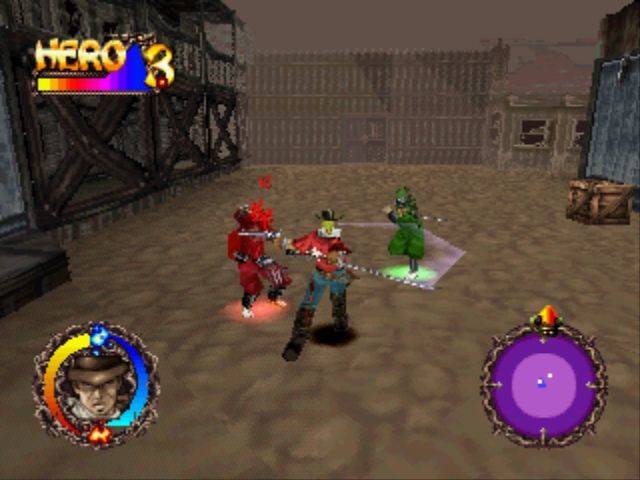
It wouldn’t be an early 3D action-game if there weren’t any platforming, and Rising Zan delivers. Zan’s controls are just serviceable enough to get by, and the obstacles are thankfully very basic. There is no complex Super Mario 64 style courses or elaborate trick-jumps. Zan‘s environments are glorified hallways with a few bends that keep things from being too boring.
The extent that Rising Zan will demand for platforming is the mastery of the helicopter sword swing that allows the hero to hover. It is utterly absurd, but fits in a weird God Hand-like way, and is legitimately helpful for gaining a bit extra control when clearing gaps. The platforming is not unlike the designs seen in the Crash Bandicoot games, but more forgiving.
The world’s aesthetics are very much of its time: blocky and pixelated. Thanks to carefully designed models and clever art direction with the textures, there is never any mistaking of what anything is supposed to represent. For the most part this is set in western towns, fortresses, and medieval style Japanese castles; and they are about what anyone would expect for a PlayStation game.
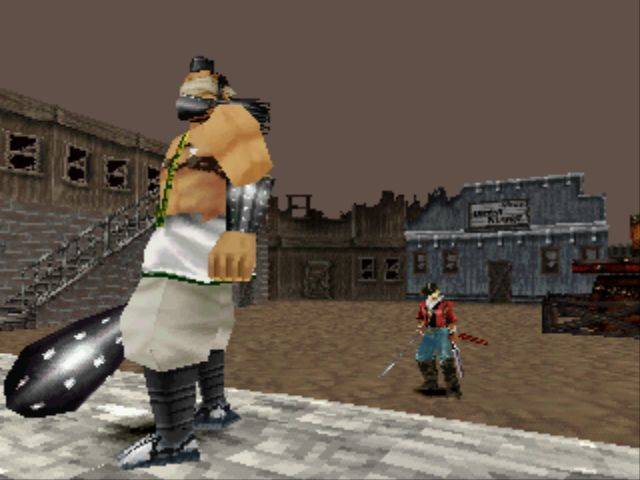
Stairs are flat slopes with adorable stair textures painted on to give the impression of detail. The texture mapping distorts and warps as Zan runs around, often clipping through various pixels; a common visual quirk of the PlayStation graphics.
The frame rate is also all over the place. Rising Zan and others of its ilk were titles that punched above its weight. Having this many polygons in large environments with various kinds of enemies with their own AI routines was a lot for 1999. This would lead to the frame rate taking a big hit, yet Rising Zan does its best to stay mostly steady.
Rising Zan was truly ahead of its time. Not only did it predate Devil May Cry in terms of being a stylish-action game that grades you with a style rating, but it also came before God of War‘s approach to quick-time-event finishers. These amusing fatalities are comically bloody, and often have some creative choreography that still manages to impress.
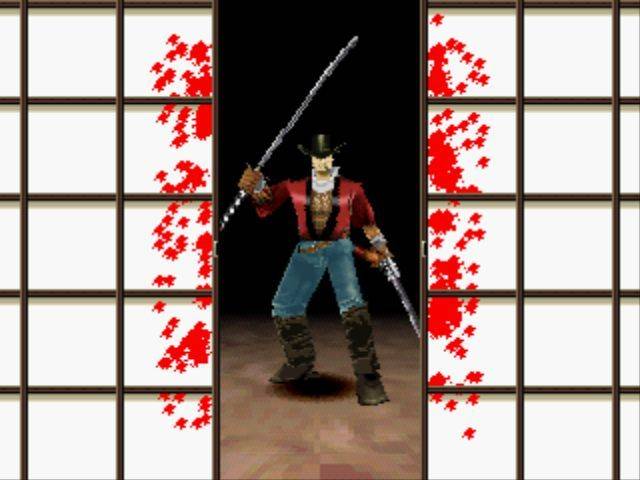
Rising Zan‘s innovations do not stop at QTE fatalities and style ratings; Zan also has what might be the earliest iteration of what Devil May Cry fans would consider to be a “Devil Trigger.” Zan fills up his hustle meter based on how stylish his finishers are, and when it is full he can execute his Hustle Trigger- err- Hustle Time.
Since Zan is the first sexy male video game action hero, the best way to illustrate his raw power is to represent it with an engorged phallic symbol; his sword. Hustling makes Zan’s katana erect to ridiculous proportions, increases his attack power by a heavy margin, and makes him faster than a coked up Speedy Gonzales.
The flow of building and expending this power is the satisfying loop that makes Rising Zan still fun to play decades later. It may not look or sound like much today, but the simplicity and aggressive crunchiness of the violence holds up in any age.
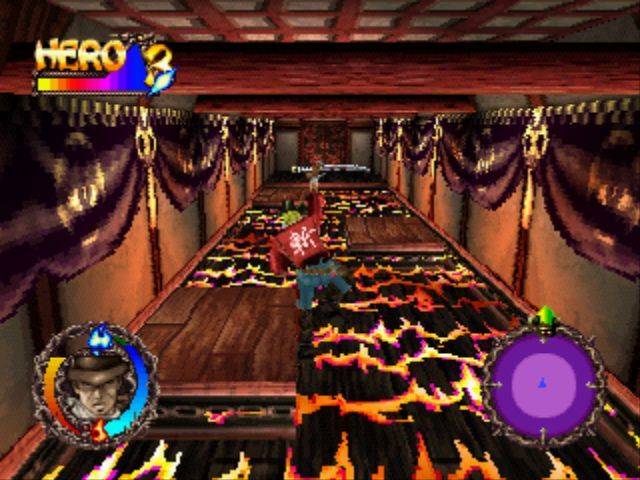
The story of Rising Zan is about what would be expected from a game with “Samurai Gunman” as the subtitle. Zan is a weeb during the wild west, who trained how to use a katana in Japan and returns to the states to get some payback on the Asian thugs who terrorize his kin.
The plot does not get any deeper than a basic revenge story that is ripped from sleazy 80s action-sploitation. It is merely an excuse to allow the player to look awesome slicing and blasting ninjas, with an occasionally gigantic sword. Even the voice acting sounds like it is self-aware of the kind of game it is; characters are very hammy, and the ninjas scream out Asian-sounding gibberish.
Impressively, the coherent dialogue is entirely in English in both the Japanese and Western releases. This makes Rising Zan very accessible for anyone who decides the download the digital version from the Japanese PlayStation Network. The only difference between the two other than swapping the cross and circle buttons for cancel and confirm, is the theme song is different between the two regions.
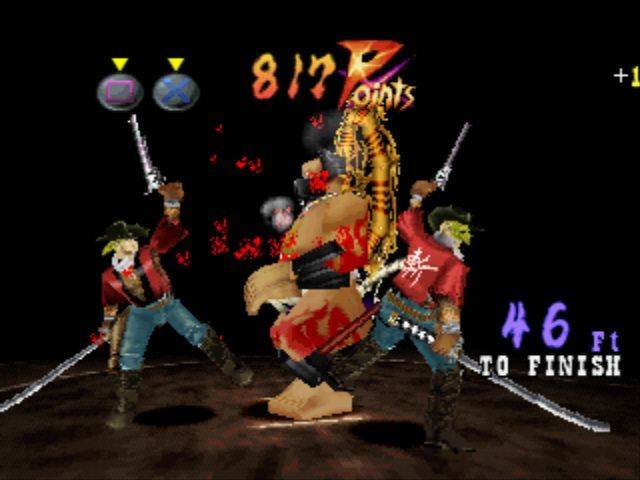
Zan‘s biggest issues were the standard camera annoyances that were common in early 3D games from the 90s. Often the view would get obscured when in enclosed levels, and the flurry of pixelated effects would make for a crowded image.
The point-of-view is raised up above Zan, so there is usually a clear shot of what is ahead, and the angle is slightly pointed downwards to make platforming a bit easier. This works for the outdoor levels well enough, but in the castle or fortress areas it becomes a liability, and the camera always seems to get caught on something.
The aforementioned visuals quirks that the PlayStation was known for are on full display; disappearing or flickering walls and geometry that clips in and out of existence. It all depends on where Zan is located at any given moment, and these flaws were something that existed with even the best PlayStation classics.
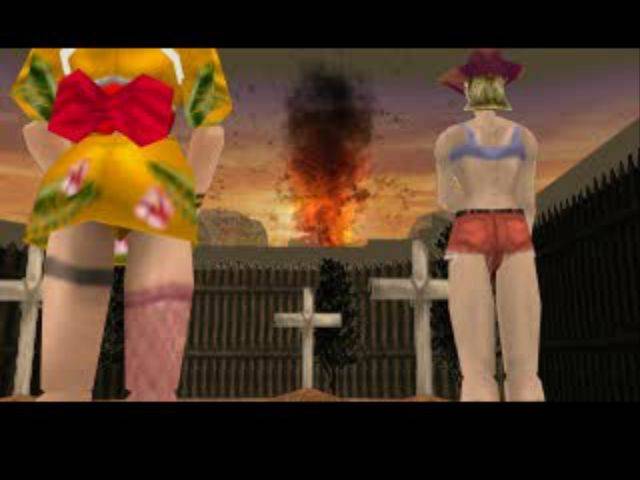
Rising Zan: The Samurai Gunman is an action game from a time where developers were free to make action games that hinged on a high concept idea. Somebody at UEP Systems had an idea for a 3D action game that emphasized style, where the player could alternate between a ranged and close ranged attacks on the fly. Little did they realize the trail they were blazing.
It is a shame that Zan became nothing greater than an forgotten cult classic, and that it never got a Western PSN release. Unfortunately, UEP Systems has been defunct for a long time, and Agetec has been inactive for years. It is unlikely that we will ever see Zan ever again in a sequel or remake, given the circumstances of the developer and publisher.
Rising Zan: The Samurai Gunman is enjoyable to those who grew up playing PlayStation games, and have an interest in the history of stylish action games like Devil May Cry. It is undeniably of its time, and may not look like much by today’s standards, but the action is still engaging and very playable for something that was made with almost nothing else to base it upon.
Rising Zan: The Samurai Gunman was reviewed on PlayStation 3 using a personal copy. You can find additional information about Niche Gamer’s review/ethics policy here.
Images:GameFAQs